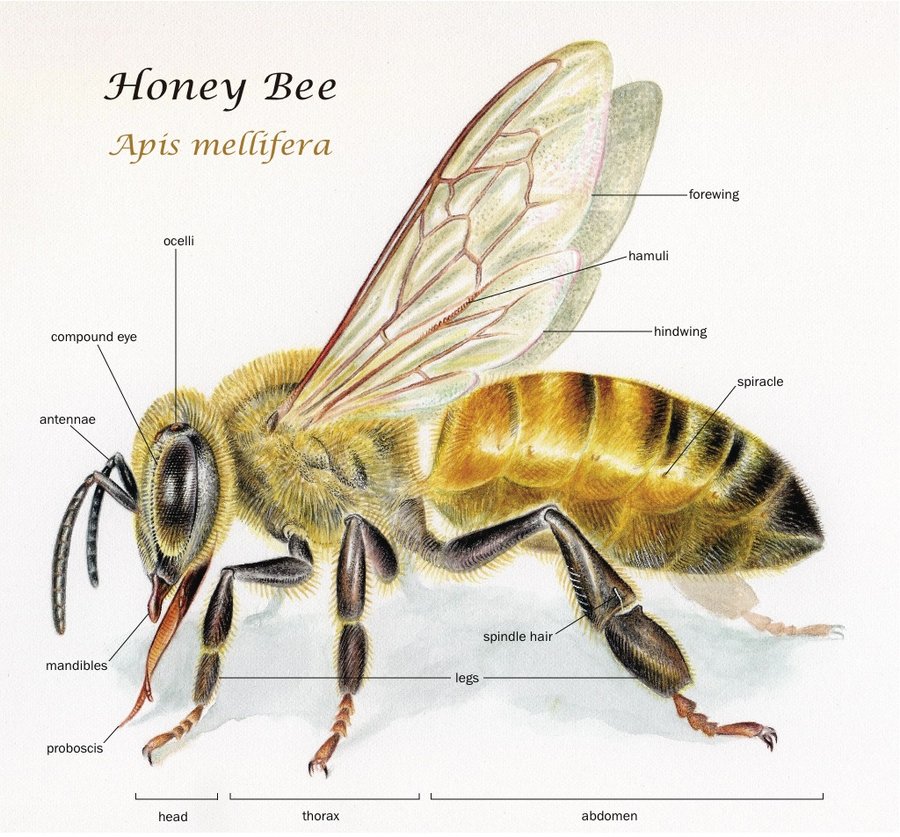Within the European Union, France is the second largest user of pesticides, particularly neonicotinoids and glyphosates. This has led to pesticide sprays being used in close proximity to city centers with many people, including children becoming ill. The western honey bee is in decline along with honey production, the French government has banned the use of all major pesticides and implemented new alternatives to the use of pesticides. Apprendre un peu histoire de miel en France et apprendre sur l’avenir des abeilles au XXIème siècle.
FIELD OF STUDY

The study of French is the discipline of pronunciation, grammar, reading, writing, listening comprehension, speaking, and conversing entirely in French. If you dive deeper into the field of French, you will study the cultural aspects of France and other Francophone cultures around the world which includes: politics, health care, economics, arts, gastronomy, sports, and recreation activities.
The larger discipline of French is humanities, as being able to converse in French, communicating with native French speaking citizens. By studying another language, you are opening the door to many new opportunities to study in another country or working professionally in a French speaking country.
In the field of French, there are many professional careers that greatly contribute to society and to the general public. The French government is always accepting English speaking students to teach through TAPIF (Teaching Assistant Program In France). There are opportunities to work as tour guides both in English or French. There are administrative positions for translators and editors who can speak duel languages.

The French Institute of Beekeeping Sector and Pollination (l’institut de l’abeille1) is responsible for coordinating national research and experimentation activities in apiculture. France consumes around 40,000 metric tons of honey, and needs to fulfill that demand. The French Institute of Beekeeping Sector and Pollination offers training for new apiarists who are interested in exploring this sector.
CRITICAL ISSUE
France has become the first country to ban all five major pesticides, blaming neonicotinoids as the cause of the recent decrease in the populations of the Western Honey Bee2. Known as, “colony collapse disorder”, recent scientific studies have shown these harmful and potential carcinogenic chemicals are responsible for the recent die off of colonies.

Neonicotinoids are a new type of pesticides that are a synthetic derivative of nicotine, which scientific studies are finding the bees are becoming addicted to the chemicals3. Neonicotinoids block specific neurons in insects, neonicotinoids are deemed less harmful to warm-blooded animals but are highly toxic to insect pests and too many species of bees. The most used pesticide, imidacloprid, causes memory loss and navigation disruption; making it difficult for bees to return safely to the hive. It can also lead to paralysis and death.

It is critical that farmers use pesticides, like neonicotinoids, to prevent the destruction of crops from invasive pests. Crop dusting is an effective method of spraying pesticides onto crops, or coating seeds with the pesticides before planting. The honey bee has been affected by the use of pesticides, mainly by neonicotinoids. They are synthetic derivatives of nicotine, an alkaloid compound found in the leaves of many plants, including tobacco. It is particularly dangerous for bees because they directly attack their central nervous system that can lead to paralysis and death4. The honey bees that pollinates the crops to help the reproduction of crops are ingesting this highly toxic chemical that will alter their behavior or kill them.
ECO-FRIENDLY ALTERNATIVE METHODS
Since 2009, the French government has launched a global action plan for the reduction of the use of plant protection products (all major pesticides) called Écophyto. This plan is to educate farmers on alternative methods for plant protection without using pesticides or glyphosates5.

Unfortunately, the government’s plan for reducing the use of pesticide has failed. The target goal of reducing the percentage of pesticide was not met, as the use of pesticide increased 12% from 2009 to 20186. This doesn’t deter the government’s plan for reducing farming chemicals and pesticides; the government can only improve upon what has worked and did not work and implement those changes into a new program.
That is why the French government has created Écophyto II. This new plan has a target of -50% of pesticides by 2025, and has decided to put an end to the main uses of glyphosate by the end of 2020 for main uses and at the latest by 2022 for all uses, while stating that farmers would not be left in a stalemate7.
FEATURED INSECT

Western Honey Bee
Order: Hymenoptera
Suborder: Apocrita
Superfamily: Apoidea
Family: Apidae
Subfamily: Apinae
Tribe: Apis
Genus: Apis
Subgenus: Apis
Species : Apis mellifera
The Western Honey bee develops in four distinct life cycle phases: egg, honey bee eggs measure 1 to 1.5 mm long and look like a tiny grain of rice. Larvae, larvae are referred to as “open brood” because the cells are uncapped. Pupa, the prepupal honey bee larvae live beneath a wax cap and will molt into a pupa and will remain under the wax cap until they molt into an adult. The total development time varies a bit among the three castes of bees: 24 days for drones, 21 days for worker bees, and 16 days for queens. Drones are the male caste of honey bees, while the worker bees are the female castes8.

The Western honey bee is an insect, and most insects have three body regions and six legs. The body regions are called the head, thorax, and abdomen. The honey bee is covered in a thick layer of cuticle called, exoskeleton or external skeleton. This exoskeleton serves as armor for the honey bee to protect the bee’s vital organs. The bee’s bodies are covered in hair. The branched hair of the honey bee helps pollen stick the bee’s body easier. These tiny hairs build up electrostatic charges as the bee is flying. This charge makes the pollen jump onto the bee’s body when she visits a flower9.

The Western Honey Bee, Apis mellifera, is native to Africa and Europe. Honey bees are not native to the Americas, but were introduced by European settlers. Honey bees harvest nectar (carbohydrates) and pollen (protein) from flowering plants. They are not attracted to meats like the yellow jackets.
The social structure of the colony is similar to that of an ant colony. The colony is maintained by the presence of the queen and her workers. Communication is key for social colonies like honey bees (and ants), as they use pheromones and communicate through dancing. The goal of the hive and its workers is the safety of the queen and its brood.
HUMAN-INSECT CONNECTION

The French have always loved beekeeping and honey production, dating back to the BCE when the Gauls controlled the territory. Charlemagne or Charles the Great became king of the Franks in 768, king of the Lombards in 774 and was crowned emperor of Rome by Pope Leo III in an effort to revive the Roman Empire in the West10. He created Charlemagne’s Capitularies (rules/laws) from around 794 AD. Charlemagne specified estate management and revenue collection rules for royal estates. He specified beekeepers to be assigned to each estate and a tally of income from honey, wax and mead be kept11.
Napoleon Bonaparte was influenced by the Merovignian Bee, which he incorporated into the Coat of Arms of the new Napoleonic French Empire12. He often wore images of the honey bee embroidered on some of his regal garments. They also ornamented many objects in his imperial residences, and he allowed some of his highest ranking courtiers to wear them and decorate with them as well.

The Western Honey Bee and other types of honey bees have played an important role in French society through the production of honey. Each year for beekeepers, they have noticed a steep decline in the amount of honey produced through their colonies.
HONEY PRODUCTION IN FRANCE

The Western Honey Bee and other types of honey bees have played an important role in French society through the production of honey. Each year for beekeepers, they have noticed a steep decline in the amount of honey produced through their colonies. In 2016, France produced 9,000 tons of honey instead of their normal average of 18,000 to 20,000 tons of honey annually.
2018 saw a huge recovery in production, as the country produced 28,000 tons. Currently, there are 70,000 beekeepers in France, with 1,300,000 hives producing 18,500 metric tons of honey each year. In 2010, the French beekeeping sector’s estimated worth was 133.5 million euros13.
There are many theories as to why honey production has been in decline. Firstly, the use of pesticides. Pesticides can alter their behavior, lower sperm count, cause memory loss, disrupt navigation, paralysis and death.

Second cause, climate change. Due to the extreme weather conditions, flowers and plants are not flowering normally, causing less than average nectar; forcing the western honey bee to travel further, become lost and perish.

Third cause, mites. Parasites like mites attach themselves to bees to drink their blood. Once infected and back in the hive, the mite can quickly spread. There is also a paradox for beekeepers who are against the use of pesticides, as some beekeepers have been known to use pesticides to keep their colonies safe from mites. Mite populations in colonies have become overbearing, so some beekeepers have used pesticides to control mite populations. This has negative effects on the queen, as she will become barren and will eventually be killed by her brood. Some pesticides no longer work as mites are becoming resistant to the pesticide. Some beekeepers use nonchemical methods by mimicking swarming. Swarming process by which a new honey bee colony is formed when the queen bee leaves the colony with a large group of worker bees. They will transfer the queen and some workers to a new hive14. This means the colony will need to rebuild, but the mites will slowly die off as there will be no colony left for the mites to attach too.

FOR OR AGAINST THE USE OF PESTICIDES
The use of pesticides on farms and near the centers of town and villages has become a major concern in France because the use of pesticides has contributed too many farmers falling ill in western France. One chemical, known as metam sodium, is applied directly to the plants in a powder form. In the Maine-et-Loire department, (in the administrative divisions of France, the department is one of the three levels of government below the national level between the administrative regions and the commune) there have been three outbreaks with 61 reported cases. 17 people from those reported cases were briefly hospitalized. No one knows what the long term effects can have on the human body15.
Non-organic farmers are arguing they have no other methods of keeping weeds and invasive pests out of their crops. They argue the restriction on the use of pesticides have hurt their businesses. Farmers believe that the ban is too severe and will harm their business and create unfair competition with other European and non-European food producers.
France’s Agriculture Minister Didier Guillaume lashed out at the growing number of mayors imposing the illicit 150-metre bans. “150 meters is out of the question,” Guillaume told broadcaster Europe 1, warning that with such large areas becoming extinct from non-organic farming, the French “would be forced to get food elsewhere” as it would threaten the country’s overall food production. Instead, he said it would be more realistic to envision a buffer zone of between one and five meters16.
THE PESTICIDE GENERATION : CHILDREN ON THE FRONT LINE
https://webdoc.france24.com/france-pesticide-generation-children-front-line-glyphosate-monsanto/
This is a very difficult article to read. It shares the stories of children in France who have been affected by pesticides and glyphosates. It is an important article to read that goes into great detail of the affects that we make to apply to our body, or that we consume without thinking of where our food comes from or the consequences.
THE FUTURE OF BEES
21st technology is about to be introduced to the beehive with the all new BuzzBox. The BuzzBox will automatically send reports to your mobile app every 30 minutes, detecting: swarming, missing queen, healthy/sick bees and collapsed hives in real time. It will monitor local temperatures, humidity, barometric pressure and local weather conditions. This sort of technology is imperative today with colonies collapsing more and more frequently17.
With the implantation of 21st technology, the EU creating new laws to ban the use and practice of spraying pesticides on crops, the French government installing alternative methods to glyphosates and plant protection; there is a good chance the western honey bee can make a recovery. The honey bee still has to deal with climate change, an endeavor that will push the limits of the western honey bee closer to extinction. There may be a glimmer of hope and that is definitely worth buzzing about.
Sources cited :
- L’expertise Technique Et Scientifique Au Service De La Filière Apicole.” ITSAP, https://itsap.asso.fr/
- Dupraz-Dobias, Paula. “France Bans All Uses of Neonicotinoid Pesticides, Outpacing European Union Measure.” Chemical & Engineering News, American Chemical Society, 7 Sept. 2018, https://cen.acs.org/environment/pesticides/France-bans-uses-neonicotinoid-pesticides/96/i36
- What Is a Neonicotinoid?” Insects in the City, https://citybugs.tamu.edu/factsheets/ipm/what-is-a-neonicotinoid/
- King2018-03-24T10, Anthony. “What You Need to Know about Neonicotinoids.” Chemistry World, 24 Mar. 2018, https://www.chemistryworld.com/news/what-you-need-to-know-about-neonicotinoids/3008816.article.
- Plan de sortie du glyphosate : le dispositif. Accueil. 2019 Mar 13 [accessed 2019 Nov 16]. https://agriculture.gouv.fr/plan-de-sortie-du-glyphosate-le-dispositif
- StokstadOct E, Stokstad E, ServickNov K, BrainardNov J, MalakoffNov D, KaiserNov J, MervisNov J, MoraNov K, FrederickNov E, ChoNov A, et al. France’s decade-old effort to slash pesticide use failed. Will a new attempt succeed? Science. 2018 Oct 11 [accessed 2019 Nov 16]. https://www.sciencemag.org/news/2018/10/france-s-decade-old-effort-slash-pesticide-use-failed-will-new-attempt-succeed
- Ministère de l’Enseignement supérieur, de la Recherche et de l’Innovation. Le plan Ecophyto II pour réduire notre dépendance aux pesticides. Ministère de l’Enseignement supérieur, de la Recherche et de l’Innovation. 2019 Jun 4 [Accessed 2019 No 16]. https://www.enseignementsup-recherche.gouv.fr/cid142447/le-plan-ecophyto-ii-pour-reduire-notre-dependance-aux-pesticides.html
- Mortensen AN, Schlmehl DR, Ellis J. common name: European honey bee. European honey bee – Apis mellifera. 2013 Aug [accessed 2019 Nov 16]. http://entnemdept.ufl.edu/creatures/MISC/BEES/euro_honey_bee.htm
- Mortensen AN, Schlmehl DR, Ellis J. common name: European honey bee. European honey bee – Apis mellifera. 2013 Aug [accessed 2019 Nov 16]. http://entnemdept.ufl.edu/creatures/MISC/BEES/euro_honey_bee.htm
- Charlemagne. Wikipedia. 2019 Nov 15
- https://en.wikipedia.org/wiki/Charlemagne
- Geri Walton. “The Importance of Bees to Napoleon Bonaparte.” Geri Walton, 15 Aug. 2019, https://www.geriwalton.com/the-importance-of-bees-to-napoleon-bonaparte/
- Honey from France. Honey Traveler. [accessed 2019 Nov 16]. https://www.honeytraveler.com/honey-by-country-region/honeys-from-france/
- Stokstad E. Breeders toughen up bees to resist deadly mites. Science. 2019 Jul 25 [accessed 2019 Nov 16]. https://www.sciencemag.org/news/2019/07/breeders-toughen-bees-resist-deadly-mites
- Malvezin, Christophe. “A Comprehensive Program to Sustain French Beekeeping Sector.” French Food in the U.S., 6 May 2015, https://frenchfoodintheus.org/817
- Afp. France suspends use of popular pesticide after dozens fall ill. The Local. 2018 Oct 26 [accessed 2019 Nov 11]. https://www.thelocal.fr/20181026/france-suspends-use-of-popular-pesticide-after-dozens-of-farm-workers-fall-ill
- Listen to your bees. OSBeehives. [accessed 2019 Nov 16]. https://www.osbeehives.com/

